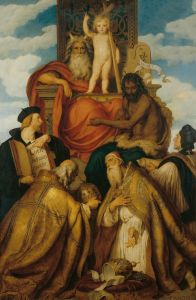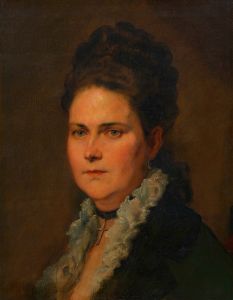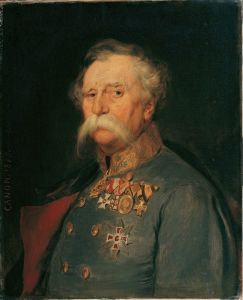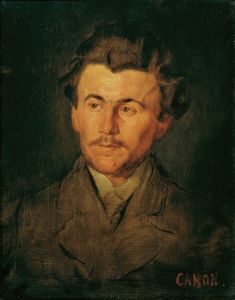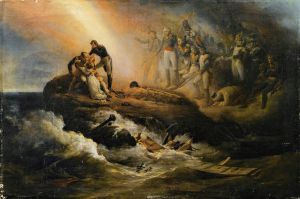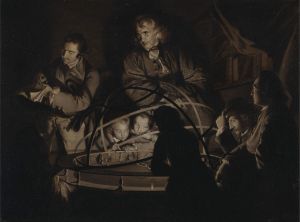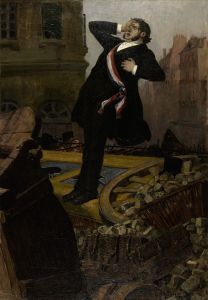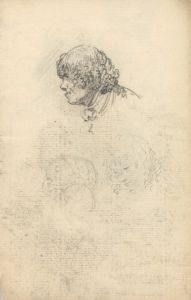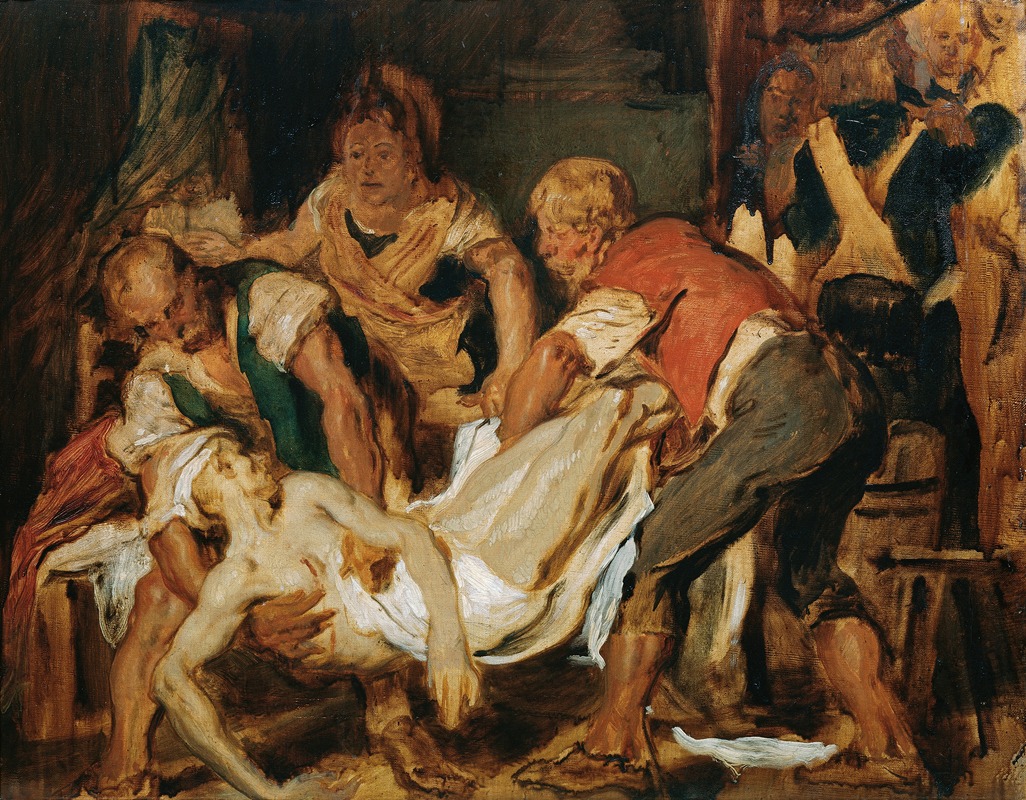
Die Bergung der Leiche Jean-Paul Marats
A hand-painted replica of Hans Canon’s masterpiece Die Bergung der Leiche Jean-Paul Marats, meticulously crafted by professional artists to capture the true essence of the original. Each piece is created with museum-quality canvas and rare mineral pigments, carefully painted by experienced artists with delicate brushstrokes and rich, layered colors to perfectly recreate the texture of the original artwork. Unlike machine-printed reproductions, this hand-painted version brings the painting to life, infused with the artist’s emotions and skill in every stroke. Whether for personal collection or home decoration, it instantly elevates the artistic atmosphere of any space.
Die Bergung der Leiche Jean-Paul Marats, translated as "The Recovery of the Body of Jean-Paul Marat," is a painting by the Austrian artist Hans Canon. Hans Canon, whose real name was Johann Baptist Strašiřipka, was a notable 19th-century painter known for his historical and genre scenes. He was born in 1829 in Vienna and became a prominent figure in the Austrian art scene during his lifetime.
The painting depicts a scene related to the aftermath of the assassination of Jean-Paul Marat, a radical journalist and politician during the French Revolution. Marat was a significant figure in revolutionary France, known for his fiery writings and his role as a leader of the radical Montagnard faction. He was assassinated on July 13, 1793, by Charlotte Corday, a Girondin sympathizer who opposed his radical views. Marat was killed while taking a medicinal bath, a setting that has been famously captured in Jacques-Louis David's painting "The Death of Marat."
Hans Canon's work, however, focuses on a different aspect of the event—the recovery of Marat's body. This painting is less well-known than David's iconic depiction but offers a unique perspective on the historical narrative. Canon's interpretation likely emphasizes the somber and dramatic aftermath of the assassination, capturing the tension and chaos that followed Marat's death.
Canon's style is characterized by a strong command of composition and a keen eye for detail, which would have been employed to convey the gravity of the scene. His works often reflect a blend of realism and romanticism, capturing both the physical and emotional elements of his subjects. In "Die Bergung der Leiche Jean-Paul Marats," Canon would have used these techniques to highlight the historical significance and emotional impact of Marat's assassination on the French Revolution.
The painting contributes to the broader artistic and historical discourse surrounding the French Revolution, a period that has inspired countless works of art, literature, and scholarship. By choosing to depict the recovery of Marat's body, Canon adds a layer of depth to the understanding of this tumultuous period, focusing on the immediate consequences of political violence and martyrdom.
Hans Canon's work, including this painting, is part of the rich tapestry of 19th-century European art, which often grappled with themes of history, politics, and human emotion. While "Die Bergung der Leiche Jean-Paul Marats" may not be as widely recognized as other depictions of Marat's death, it remains an important piece for those interested in the intersection of art and history.
Overall, Hans Canon's painting serves as a testament to the enduring impact of the French Revolution on European art and the ways in which artists have sought to interpret and convey the complex narratives of this pivotal historical moment.






